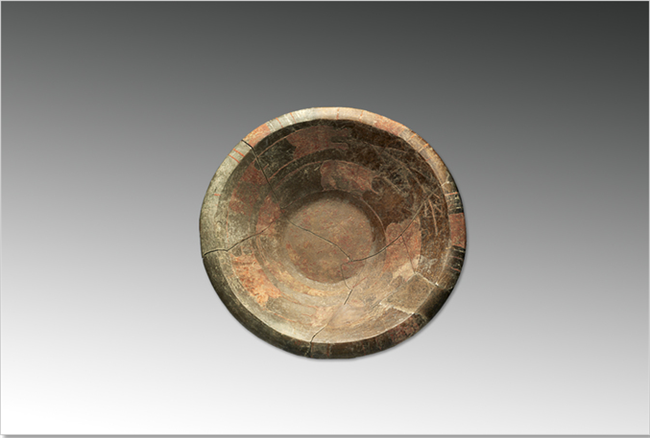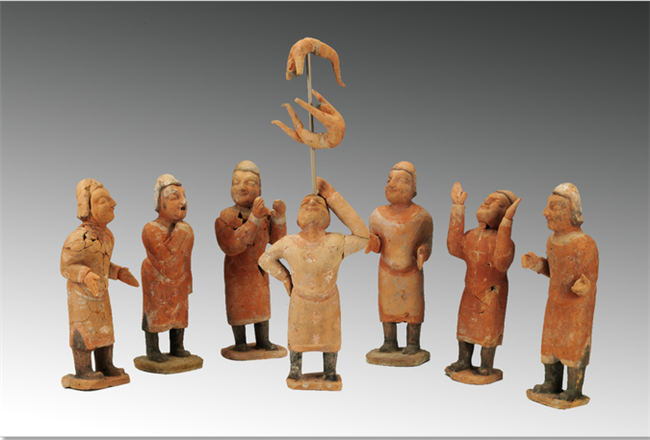Pottery
Pottery or earthenware was invented in Shanxi as early as the Neolithic Age. During the historical period of Yangshao Civilization, Shanxi was renowned for its colored pottery wares with flower patterns. In addition to items for daily use, some pottery wares with artistic value and other various periods have been found in the province. These include the pottery figures of foreigners and pottery ox in Northern Dynasties. Shanxi is also the hometown of glaze. For thousands of years, the glaze wares have been widely used to decorate various buildings and to make artforms like incense burners.

Colored pottery basin with dragon pattern, Neolithic Age
With an upper diameter of 40.5 cm and a height of 8.8 cm, the item was unearthed in 1984 in Taosi in Xiangfen county. It was an yellow earthenware with open mouth, indented body and flat bottom. The polished inner surface is coated with brown color and decorated with red and white dragon pattern. The dragon features round eyes, protruding ears, exposed teeth and tongue, which resembles the ear of wheat. The head of the dragon is near the upper rim and its tail is at the center of the bottom. While its body resembles that of the snake, the dragon combines the features of many kinds of animal. Due to its staid, mysterious and majestic nature, the pottery basin is regarded as a ceremonious item. It was identified as a relic of the Miaodigou Culture period.

Pottery figures of acrobatic players, Northern Wei Dynasty
With heights of 20-26 cm, the pottery figures were discovered in Caofulou village in Datong. The seven acrobatic players were foreigners judging from the deep eyes and high noses. The player in the center had a pole erected on his forehead, with two children performing stunts on the pole. The six other people were doing other performances.



